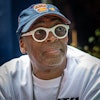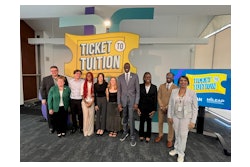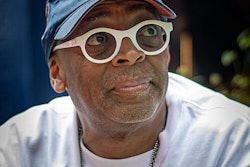For eight decades, students at Southeast Missouri State University, a mid-sized college located on the banks of the Mississippi River in rural, conservative Cape Girardeau, had proudly rooted for its sports teams, the Indians. The old-timers said the name was adopted in the mid-1920s to honor the legacy of American Indians and their warrior traditions. The teams had an Indian mascot. There was an Indian logo. And the entrance to Houck Stadium, the university’s football arena on the edge of campus, was dominated by an imposing, 30-foot-tall statue of an American Indian man.
Then as the new millennium dawned, the university’s administration decided that maybe the use of an American Indian symbol wasn’t so cool any more. In 2003 the university set up a committee to study the possibility of a name change. The committee was short-lived.
“They were run out of town because of opposition,” says Dr. Edward Leoni, a professor of health and human performance at the university. “People were in great opposition to the change.”
Undaunted, the university decided to try again two years later. University President Kenneth Dobbins asked Leoni, the faculty representative to the NCAA, to head a committee of faculty, students, alumni and boosters. Mindful of what happened in 2003, Leoni carefully planned his approach.
“I held public forums that allowed people to vent and to hear ideas,” says the 31-year veteran educator. “I would listen to them say how proud they were to be Indians. Things started to change when I showed conceptual renderings of any of the (proposed) mascots. We did a survey of alumni and students and discovered that there was more support for change than we realized. We needed to allow people to express their feelings and to see a possibility.”
In the end, the university community came around and overwhelmingly voted in favor of a new mascot, the Redhawk. Judging by the number of students who don Redhawk apparel on campus, says Leoni, the new mascot has been a huge success.
Though not as well known as some of the other controversies that erupted around plans to change American Indian mascots, the events at Southeast Missouri State show how, when handled carefully, discarding offensive American Indian imagery can actually become a tool for bringing the university community together.
“We went into it respecting the established tradition,” says Leoni. “Regardless of whether you are in a liberal or conservative community, there is still a tradition. We took that into consideration before we just jumped into it.”
The use of American Indian mascots and symbols for collegiate sports teams has been a source of controversy since the late 1960s, when some colleges and universities began retiring them. Six years ago, the National Collegiate Athletic Association adopted a policy that penalizes schools that use American Indian mascots, nicknames or logos. Schools in violation of the policy may not host championship events. They also are forbidden from wearing uniforms with the logo during NCAA playoff games.
The policy exempts universities like Florida State University that have received permission from the tribes whose names or images they appropriate.
But some communities have pushed back.
After pressure from some American Indian groups, officials at the University of North Dakota developed a comprehensive plan to drop the school’s Fighting Sioux nickname and imagery. The plan spared UND from the NCAA’s threatened sanctions.
Then, earlier this year, the Republican-controlled North Dakota Legislature jumped into the fray, passing a bill that requires the university to keep the nickname. The bill was passed in spite of objections of the North Dakota Board of Higher Education. The bill prohibits the board from taking further steps to replace the Fighting Sioux nickname or logo. It also directs the attorney general to investigate the possibility of filing an antitrust suit against the NCAA if the regulatory body doesn’t back down.
While the intensity of the spotlight has varied over the years, the issues have largely remained the same. And the controversy follows the same pattern: stiff resistance from alumni and boosters who see it as an attack on established tradition. At UND, some wealthy alumni, including one who gave the school $100 million, have made the retention of the nickname a condition of their giving. Some traditionalists have argued that removing American Indian imagery negatively affects morale and marketing.
Sociologist Charles Willie experienced this resistance first hand while serving as vice president for student affairs at Syracuse University in the early 1970s. Back then the sports teams were known as the “Saltine Warriors.”
“When I first took office I sent word to administrative offices asking that we re-think the use of American Indians as mascots,” says Willie, now the Charles William Eliot Professor emeritus of education at Harvard University. “I thought it was insulting. You had people jumping up and down sidelines with tomahawks. It’s a stereotype. It’s like Black people being shown as Amos and Andy and Stepin Fechit. My memo fell into the hands of some of the graduates of Syracuse living in Syracuse at the time. They were very insulted by it. They were quite annoyed by it. They sent me a letter saying how it was not a nice thing to do.”
Dr. James Fenelon, a sociology professor at California State University – San Bernadino who has followed the issue of American Indian mascots closely, agrees that alumni are usually the most vocal opponents to any change.
“The alumni almost always put up great resistance,” he says. “They say on the one hand it has nothing to do with American Indians, that it has to do with school spirit. Then they will oppose that frame by saying they are honoring Native people. The alumni almost never give in. They make the statement that it is their tradition. They don’t want to give up their tradition.” Like Southeast Missouri State, Miami University (Ohio)’s sports teams are now known as the RedHawks. For 68 years they were known as the Redskins.
But change, which came in September 1996, took a much different route from Southeast Missouri State. According to Dr. Rodney Coates, a professor of sociology and gerontology at the university since 1990, the impetus for change at Miami came not from the administration but from students themselves. Many of the students, he says, were inspired in part by campus discussions about diversity and also by what they learned in the classroom. Miami uses a required curriculum known as the Miami Plan, which Coates says challenges students to think critically, to question, to critique and to evaluate.
“People began to question the rightness of certain designations,” he says. “What was happening in the classroom trickled into the wider university context.”
An organized group of faculty and students lobbied the university’s board of trustees to change the name, Coates says. “The tipping point was when the Oklahoma tribe of the Miami Indians signed onto the petition,” he says.
Until that moment, the board had been ambivalent about the name change. According to Coates, the success of the effort has spawned a campus culture of increased student activism and increased student participation in service learning. More students are flocking to the study abroad programs and taking a keen interest in multiculturalism, diversity and globalization.
At Southeast Missouri State, getting the university community to even think of a new name took some careful treading on the part of Leoni and his committee. “We took our time gathering information and managing emotions,” he says.
Committee meetings averaged more than 200 participants. Leoni visited local American Indian leaders to explain what the university was trying to do. The committee set up booths in residence halls and around campus to gather student input. They surveyed alumni for recommendations and invited suggestions for a new name. Approximately 1,500 individual suggestions came in. They whittled the number to 50 and then down to five before having a vote. The two most popular names were the Red Wolves nd the Redhawks.
The Redhawks won.
Then there was the matter of getting the board to vote in favor of it.
” In the first 30 days (of the committee’s meeting) the board was skeptical of the possibility initially,” Leoni says. “But by the time we got to the end they could see the benefits outweighed the disadvantages. On the day of the board meeting, I was uncertain what the outcome would be. Vegas would have given 50-50 odds. But it was unanimous. It was the proudest moment of my career.”


















